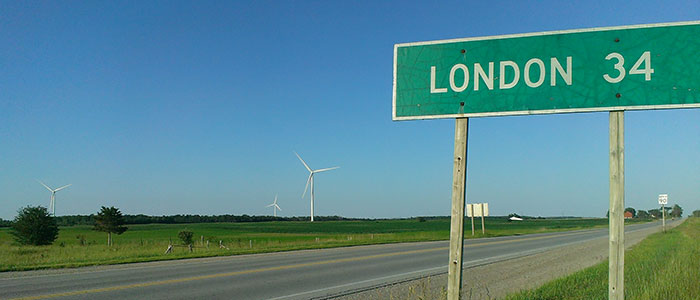According to a new study from London, Ontario-based Western University, the more a community is involved in wind-energy planning – including getting direct benefits from nearby turbines – the more likely it is that a development will have local support.
The study, by Chad Walker and Jamie Baxter of the Department of Geography, examines communities living with wind turbines in Southwestern Ontario and Nova Scotia.

According to the study, 75% of all survey respondents supported the idea of electricity rebates for wind turbines located by nearby neighbors.
Their paper, entitled “It’s easy to throw rocks at a corporation: Wind energy development and distributive justice in Canada,” is published in the Journal of Environmental Policy and Planning.
Through interviews and surveys, local residents criticized the top-down, corporate-led pattern of development in Ontario – in stark contrast to the more positive reflections about similar projects in Nova Scotia, where there are more profit-sharing, community-based initiatives.
“The general lack of financial benefits and opportunities to invest in local wind projects in Ontario may be added to the long list of things responsible for intense pushback to development in the province over the past decade,” says Walker. “In Nova Scotia, support for local wind projects was three times higher and perceptions of health effects were three times lower.”
Those living closest to wind turbines in both provinces believe that the amount of local benefits is too low, but they have even stronger feelings about the fair local distribution of those benefits. Government efforts to site new projects should focus on local fairness, said Walker and Baxter, who suggested the provinces consider novel compensation measures.
For example, 75% of all survey respondents (and 83% of those opposed to their local project) supported the idea of electricity rebates for turbines’ nearby neighbors. In Ontario in particular, reducing hydro bills in wind-rich, rural areas may make wind energy a bit more palatable. Ontario is home to more than 6,000 turbines, the vast majority of them owned by corporations outside the communities where they are located.
The study also sheds light on community-based ownership, a development strategy meant to keep benefits and control in the hands of locals.
“Past research has painted community-based development with an idyllic brush, but those living near wind turbines often were not aware of opportunities to invest in their projects,” says Walker.
Although Nova Scotia’s approach has been relatively successful in generating local support, most residents still had concerns, including fears that the majority of “local” investors may live hundreds of kilometers away and be far removed from the realities of rural wind development.
Walker and Baxter’s research is also outlined in a “Toolkit for Turbines” document, on the Communities Around Renewable Energy Projects website, which contains recommendations for policy changes and was shaped by discussion during a workshop held in December, 2016.
Walker and Baxter focus attention on more equitable and sustainable planning processes, but they emphasize that “financial benefits are not a replacement for proper mitigation” of issues such as noise and sleep.
Along with researchers from Dalhousie University in Halifax and Queen’s University Belfast (UK), Baxter has recently received federal funding to continue studying community-based renewable energy development and new ways to improve siting processes.
Filed Under: Community wind, News, Policy, Projects




